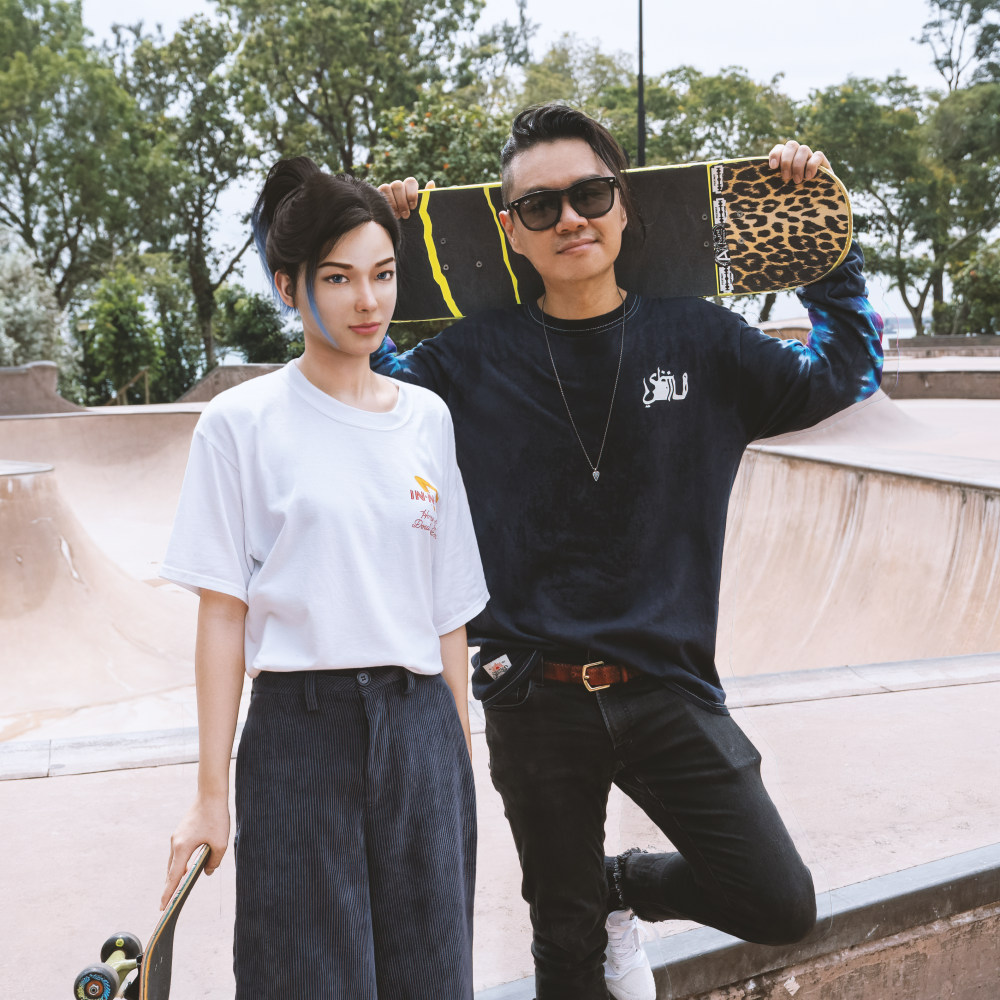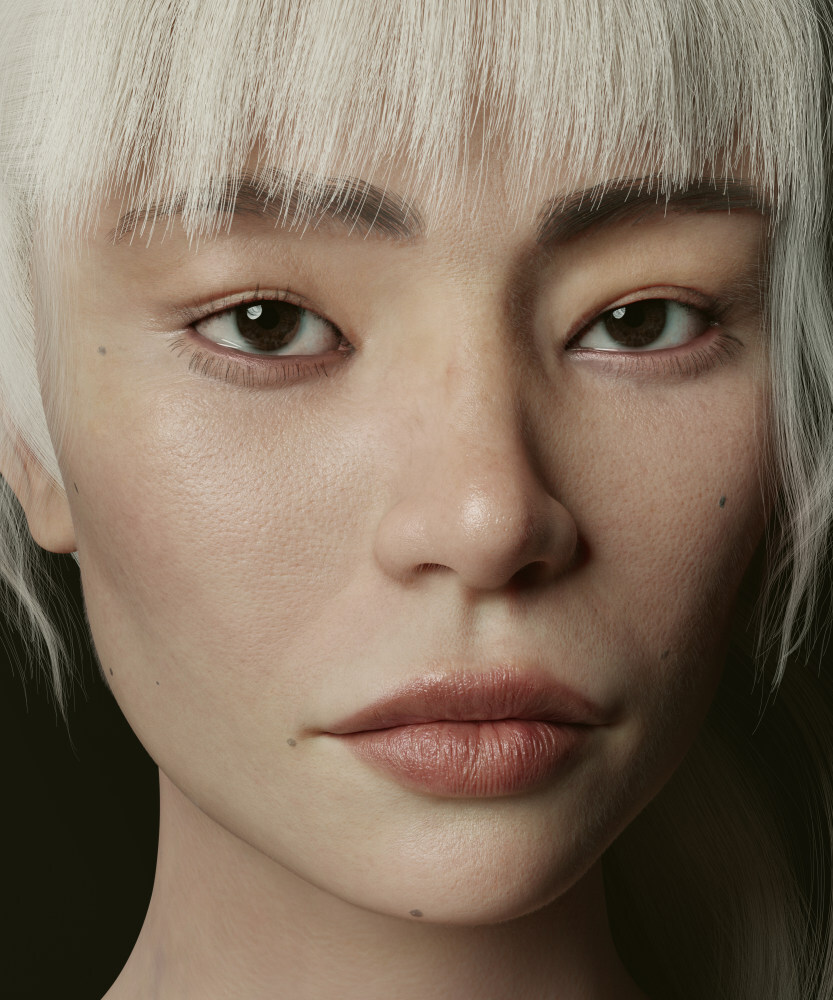
Will virtual social media influencers replace human ones? They’re everywhere, from K-pop to fashion catwalks
- We may just be seeing the start of the rise of virtual influencers, say insiders. A 2018 estimate made by Weibo valued the KOL industry at over US$15 billion
- One digital influencer has more than 250,000 followers on Weibo, another has worked with Chinese actor Li Xian, and there is even a virtual modelling agency
Rae, based in Singapore, did something at the start of the year that most of the city state’s denizens have not been able to do for some time – she “travelled” to Shanghai.
However, the slim, blue-haired fashion lover is not a real person – she’s a CGI creation that’s powered by artificial intelligence technology.

Italian menswear label Ermenegildo Zegna has, for example, paired Noonoouri with Chinese actor Li Xian in its latest campaign.

Virtual personalities have been making their presence felt in Asia, too. In November 2020, virtual influencer Ling appeared on Chinese talent show Bravo Youngsters alongside human contestants.
For the launch of her latest Ireneisgood K-streetwear collection, model-entrepreneur Irene Kim teamed up with Rozy (South Korea’s first virtual influencer) and, in March, the L’Oreal Group launched their first virtual idol, Mr Ou. Ou is an anime-style character who will share content related to beauty trends, sustainability and celebrity interviews.

This is, say industry insiders, only the start of the rise of virtual influencers and their makers. An estimate by Weibo – China’s Twitter – in 2018 valued the KOL (key opinion leader) industry at over US$15 billion.
“Chinese virtual influencers are still at the infancy stage compared to those seen working with Western brands, yet 2020 saw an influx in commercial interest,” observes Kim Leitzes, the managing director of APAC at fashion marketing platform Launchmetrics. It has recently acquired China influencer marketing platform Parklu.
“Given the industry’s new-found willingness to experiment with creating ‘phygital’ [a blend of digital and physical experiences] brand experiences, who’s to say it can’t be part of the mix?”
There are advantages to creating virtual avatars rather than promoting real humans – avatars are generally scandal-free, are not constrained by geographical boundaries, do not need to eat or sleep, and can be trusted to remain constantly “on brand”.

This was one of the reasons Singapore-based fashion photographer Shavonne Wong launched Gen V, a virtual modelling agency featuring avatars that she created last year.
“I think with the pandemic going on, virtual influencers and models do stand out as they’ll be able to work 24/7 all around the world, without having to worry about travel or logistics.
“They can be used to model outfits, work virtual runways or advertise goods all without leaving the creator’s house,” she says, adding the sense of escapism that the virtual models provide have also given them a boost.

“Unlike some other fashion designers who are comfortable being in the spotlight and are popular on social media, both creative director Zoe [Champion] and I are more comfortable behind the scenes,” Lin explains, adding that the brand has always pioneered tech-driven endeavours, such as being among the first to dress Lil Miquela.
“But we know in order to be more personal with our customers, they need to connect with someone from PH5. Ama will represent and be the face of our brand, acting as a bridge between us and our followers.”

Still, the rise of virtual influencers has not been without its challenges – one of which is that they conform to society’s expected view of Asian beauty, such as fair, flawless skin and a slim physique. Male avatars are also few and far between compared to female ones, perhaps because the influencer market tends to be female-centric.
To encourage diversity in this space, Wong has plans to create more virtual models that might range from non-binary to androgynous to plus-size.
“I want to have models of a good range of body sizes, skin colours and ages,” she says, adding that it takes time to create each model from scratch.

Human influencers are already diverse and it is one aspect where they have an advantage over their virtual counterparts.
“Southeast Asia is a region which consists of a melting pot of races and different languages with different political beliefs, values, economic growth and lifestyle aspirations. It will be a challenge to achieve a ‘face’ to represent the masses,” says Kausern Hieu, country manager of Nuffnang Malaysia. The influencer and content marketing company works with some 13,000 personalities and can reach more than 20 million consumers in Malaysia, Singapore and Taiwan.
Maintaining a virtual influencer is also expensive and time-consuming, as every project has to be designed and rendered from scratch. Human influencers (or their managers) are just a phone call away, Hieu adds.

Citing a Nielsen study that shows 83 per cent of consumers tend to trust recommendations from family and friends over advertising, he adds that influencers are as close to the real thing a brand can get to word-of-mouth recommendations from friends and family.
Leitzes agrees. “There are a lot of components that make influencers impactful and which go far beyond the technological barriers. The purpose of influencer marketing is to leverage the special and personal relationships these KOLs have with their audience,” she says.
“It is critical for brands to remember that you’re not choosing an influencer because they create a lot of buzz, but because they bring authenticity and authority to your brand, which in turn will generate conversion.”

